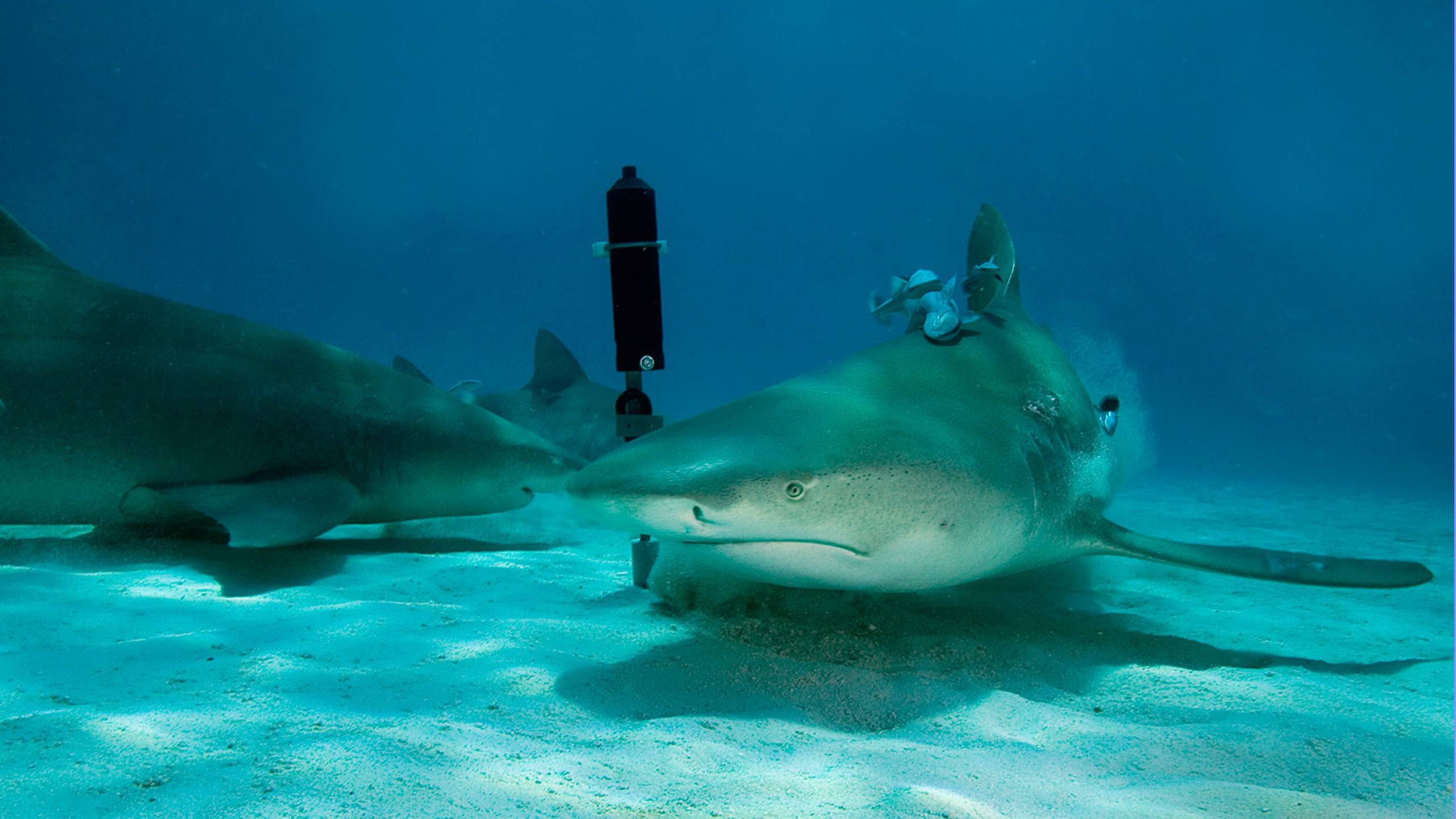White sharks are strongly endangered worldwide. As a top predator of the oceans they are at the end of the food chain, making them susceptible to accumulating a very high percentage of environmental pollutants, e.g. mercury as well as microplastics and nanoplastics.
White shark on deck
Photo © Ocearch
Background
The oceans are heavily polluted. In addition to the damage caused by global warming, millions of tons of plastic and environmental toxins pollute the oceans. Unfortunately there are only very few great whites left in the oceans. Thus we need to find out how the health status of the last populations is affected by the increasingly deteriorating environmental conditions. Great white sharks are just a model here. The knowledge gained can also be used to protect other shark species. The project started in 2012 and has been co-financed by the Foundation since 2018.
Goal
Research on white shark populations is currently in progress in cooperation with Ocearch and should provide information on their general state of health. Moreover, stress and other hormonal tests should show the stress level of white sharks when they are caught and examined.
The goal of the entire project is to study 60 animals, 20 from each of three life stages, in order to answer the following questions:
- What do their population genetics look like?
- What do their movements, habitat usage and dive profiles reveal?
- What do they eat, what are their foraging strategies and dietary structure?
- What can we learn about their reproductive cycle?
- What is their general population health and to what degree have contaminants accumulated in their bodies?
- How does their being caught and examined affect their stress level?
- What is the composition of their microbiomes (all nonpathogenic living organisms on and in their bodies)?
- What general optical impressions do sharks project?
The subproject manager, Michael Hyatt, is a veterinarian whose research on "stress caused by catch examinations" on lemon sharks, bull sharks and hammerheads in Rookery Bay was already being financed by the Foundation and was published in three scientific journals.
Methods
The ship Ocearch is used for this research and is equipped with an appropriately large lifting platform that can be lowered into the water alongside the ship. The sharks are caught as gently as possible and drawn onto the lifting platform. Once there a hose is put into their mouth to supply them with fresh oxygen during the approximately 15 to 20 minute examination. To avoid any additional stress their eyes are covered with a wet towel. During the brief examination period they are measured, samples are taken of their blood and tissues, and in certain cases ultrasounds are made. In order to analyze their migration routes and movements, they are also equipped with a satellite transmitter (not financed by the Foundation).
Part of the blood and other biochemical and chemical tests are made immediately on board; others are made on land in specialized laboratories.
Results
A total of 56 great white sharks have been studied since 2012. Beginning in 2018 expeditions to South Carolina, Georgia, Florida, Massachusetts, Nova Scotia and Canada, resulted in the examination of 22 animals . Together with data acquired in earlier expeditions the following could be achieved:
- Novel dive profiles and movement patterns, and habitat use nicht im deutschen Text for two subadult female white sharks were recorded.
- The first relative reference ranges for plasma electrolytes and metabolites in this species were measured.
- The first comprehensive blood analysis and differential assessment for this species was made.
- Preliminary data on plasma chemistry using protein electrophoresis was gathered for Northwest Atlantic white sharks.
- An analysis of acute phase protein profiles was made that shed light on stress factors.
- The first dietary fatty acid profiles were made based on life stage and region.
- The amount of microplastics in white shark feces was analyzed for the first time.
Tests for vitamins, heavy metals, minerals and environmental toxins are still in progress.
Project Status 2022
The project will run for 3 years (2018 - 20221) and was supported with $10,000 per year.
The project reached almost all of its goals. There were just a few individuals of the diffentent age groups missing. Analyses of the data are either in progress or have already been published.
Administrative Details
Project Status: Project successfully completed in 2022
Photos: © Ocearch
Project Leader: Dr. Michael Hyatt
Funding: 2018 - 2021 ca. CHF 30,000







